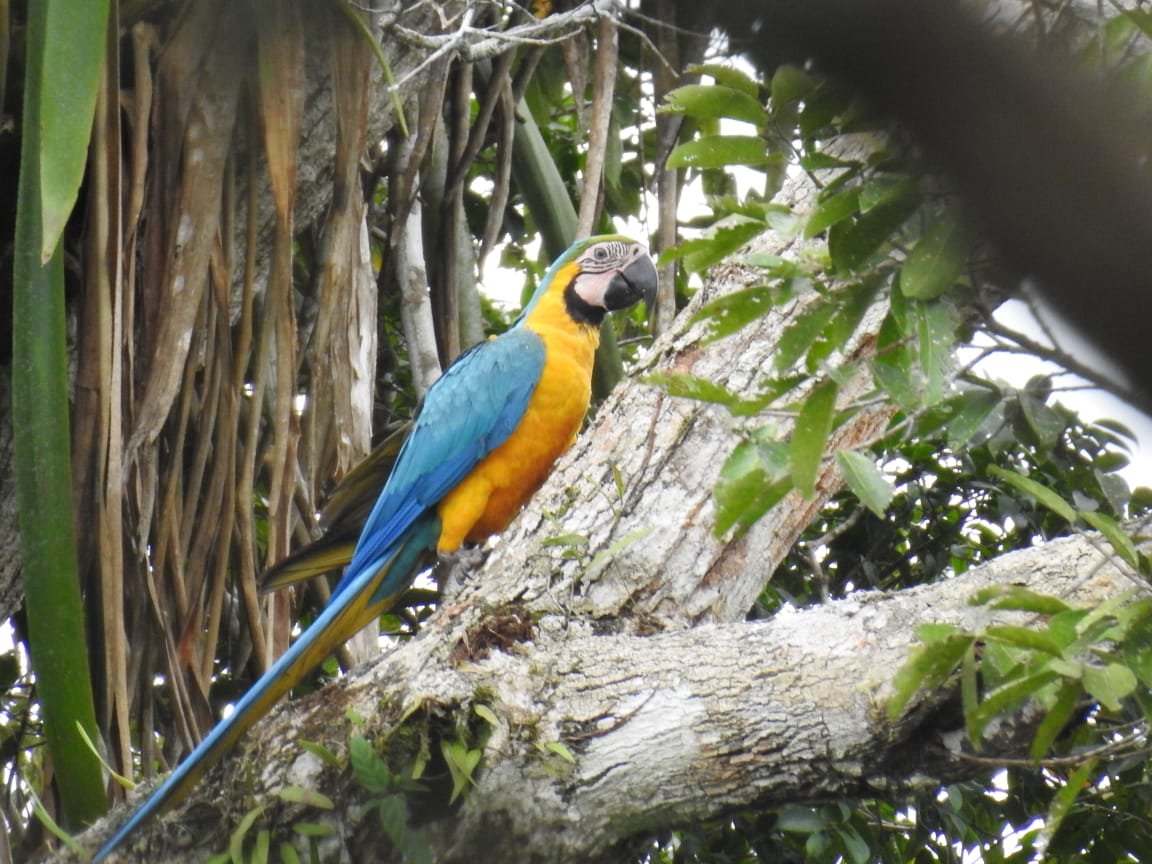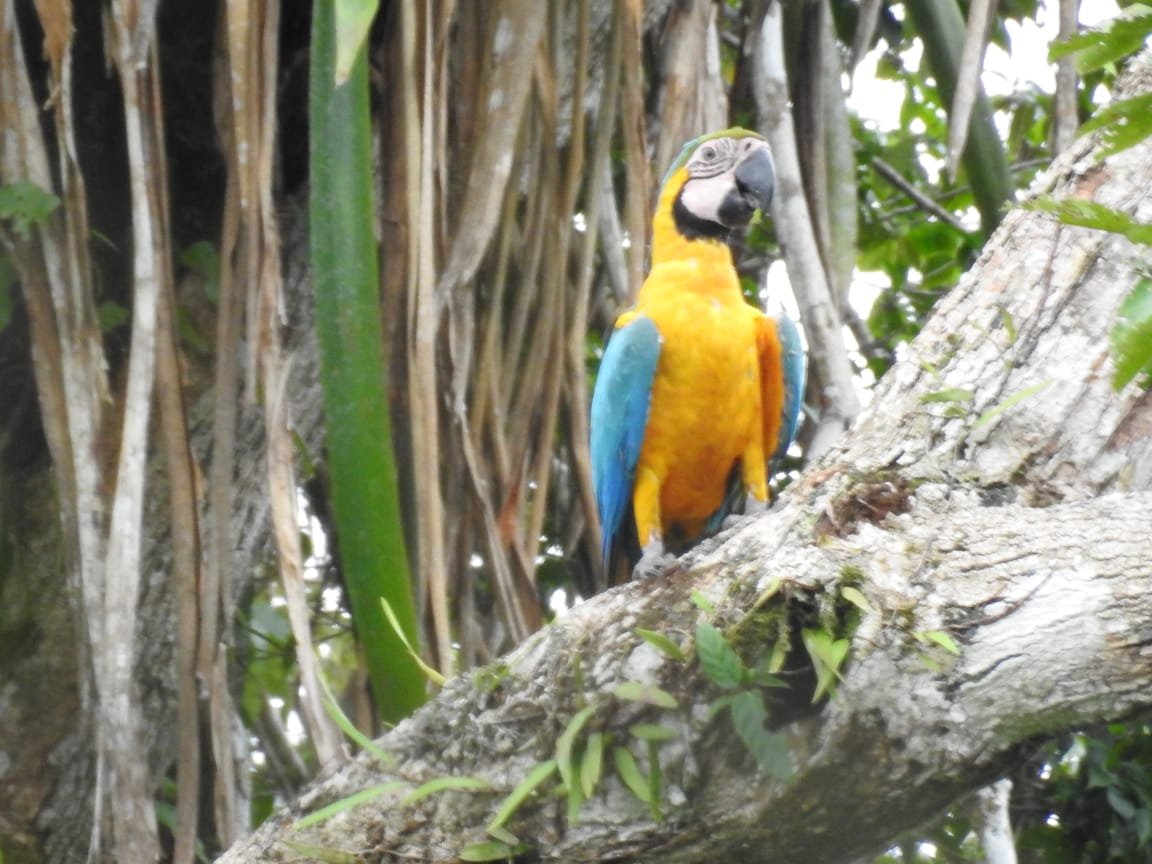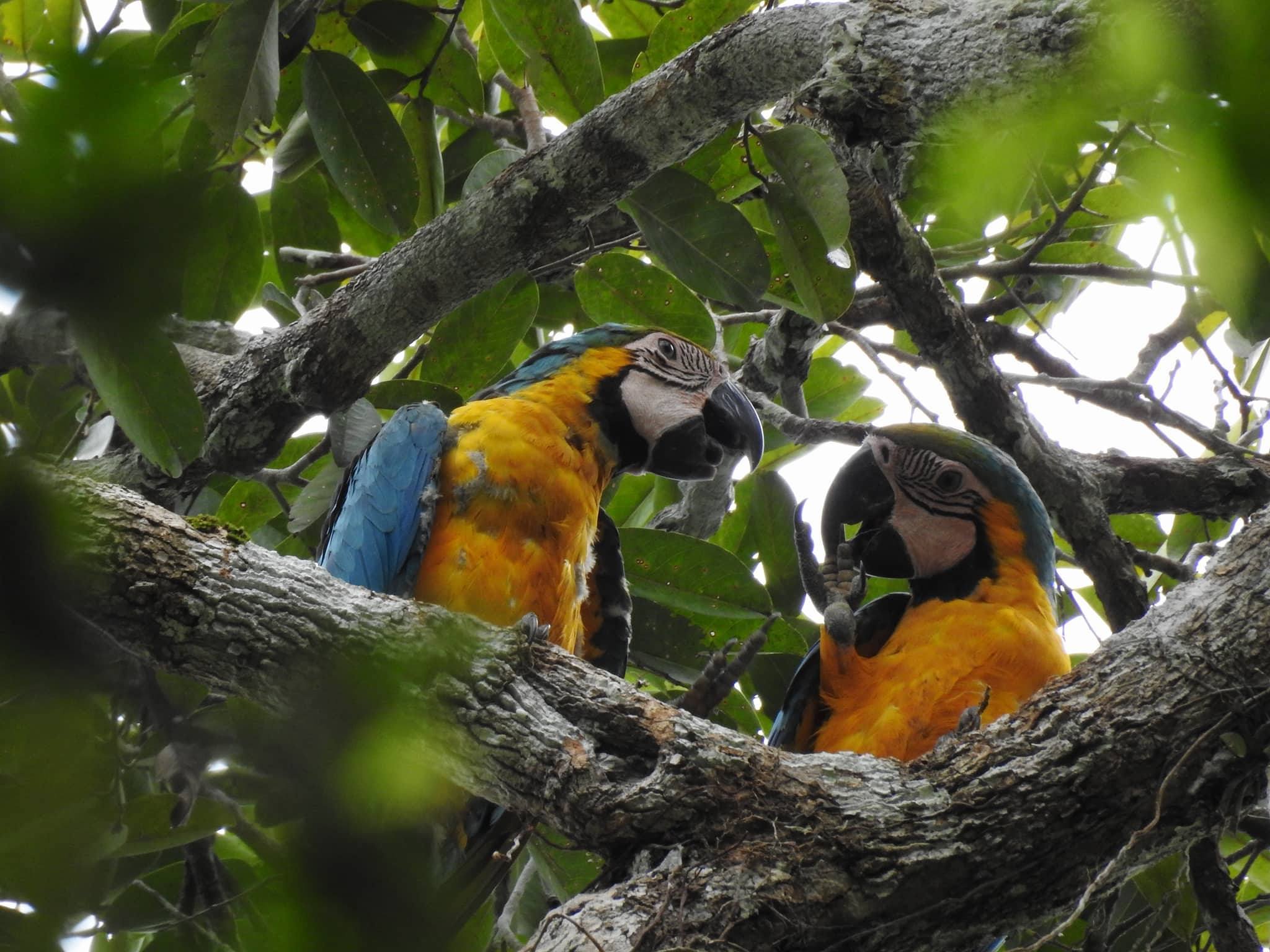blue and gold macaw
Blue and gold macaws are known for their vibrant plumage. They have a turquoise blue body and a golden yellow chest and underwing coverts. As well as a green forehead. They possess a powerful black beak designed for cracking nuts and seeds. Like other macaws, blue and gold macaws have zygodactyl feet, meaning, they have two toes that point forward and two that point backwards , aiding them in gripping branches. They typically reach a length of 30-40 inches but have a wingspan of 3 feet.
These magnificent macaws are native to the forests of South America, including countries like Venezuela, Brazil, Colombia and Paraguay. They can also be found in a small part of southern Central America known as Panama. They favor tropical and subtropical forests, woodlands, tree-dotted savannas and palm swamps. They prefer to nest really high in tall trees, often dead palms, particularly Mauritian flexuosa palms. These hollows provide a safe and secluded environment helping to protect from predators.
Blue and gold macaws are highly intelligent creatures. They have a natural curiosity and tendency to explore. They are highly social, playful, and long-lived parrots. They form strong bonds with their families and mates, and are also known to mimic sounds. You will find that the day to day activities of a blue and gold macaw include foraging and hunting, flying , social interactions, and resting as well as perching in groups for protection. Macaws are skilled fliers, traveling long distances for food and water. When resting, the birds spend time with their flock members , interacting and preening.
Blue and gold macaws are known for their strong pair bonds are monogamous, meaning they mate for life. They typically nest in hollows of trees, often reusing cavities created by other birds , like woodpeckers. Females lay 2-4 eggs which need to be incubated for about 28 days. When hatched, they are blind and featherless and are fed through both parents regurgitation. The young leave the nest after about 3 months and reach maturity around 3-4 years of age. They can live up to 50 years in the wild.
Macaws are considered omnivores, meaning they are willing to sample a variety of different foods. They are known for their ability to crack open hard shelled nuts, and they consume a variety of seeds and nuts found in their natural habitats. Fruits and berries are a significant part of their diet. As previously mentioned, the Mauritian flexuosa palms are not only crucial to the blue and gold macaws for protection and seclusion , they are also a key food source for the macaws, producing a chestnut colored , scaly fruit with yellow pulp a dan edible nut. Macaws will also consume leaves, buds and other plant matter. As well as visit clay licks (exposed riverbank) to obtain essential minerals.
Blue and gold macaws face preditation from large birds of prey, like harpy eagles , hawk eagles, and orange-breasted falcons. Humans, however, are the blue and yellow macaws main threat, who hunt them for food, feathers and pet trade and is contributing to a major decline in populations.




